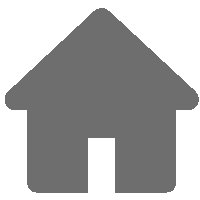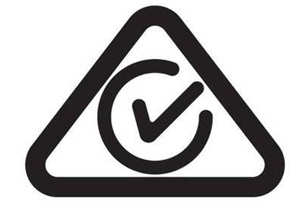
 您当前的位置:Our Services>
Certification Services>
Australia & New Zealand
您当前的位置:Our Services>
Certification Services>
Australia & New Zealand
Our Services


+86-769-83085888
+86 135 5499 1454


Australian RCM Certification
Certification Introduction
RCM certification is a mark introduced in Australia and New Zealand to achieve uniform identification of electrical products. The mark is a trademark owned by the regulatory authorities in Australia and New Zealand, indicating that the product complies with both safety and EMC requirements and is mandatory.
RCM certified controlled electrical products are mainly divided into non-regulated and regulated products, because not all products marked with RCM need to be registered. Non-regulated products do not need to be registered. Currently, only Level 3 electrical products are required to be registered, including 56 categories with high risk factors such as power adapters and vacuum cleaners.
In general, the RCM logo should be marked on the product label. The new RCM does not need to mark the agent number as previously required.
Since this requirement was issued on March 1, 2013, there will be a transitional period of three years, and it has been mandatory since March 1, 2016. Therefore, manufacturers should strictly follow the requirements to carry out relevant tests of this standard. Because of the new RCM requirements, unlike the previous ones, there will be very few companies that can provide this service, except that importers will bear the high risk of product quality failure, plus importers will have to pay registration fees and annual login fees.

Basic Information about RCM Authentication
• Nature of certification: Mandatory certification
• Whether factory inspection is required: No
• Local representation required: Yes
• Certificate validity: 2 years, 3 years, 5 years
Applicable Area
Australia, New Zealand, Nauru, Fiji, Solomon Islands, Kiribati, Federated States of Micronesia, Tuvalu, Tonga, Marshall Islands, Wanu, Papua New Guinea, Samoa.
RCM Certification Content
RCM= Safety + EMC + Importer Declaration
1. Safety
Product safety certification includes two parts: electrical products are divided into regulated electrical products (natural products) and non-regulated products (natural products).
1) Regulated electrical products are classified according to AS/NZS4417.2, including electric heating equipment, refrigeration equipment, power tools, parts, etc. Three of the licensers-Queensland, New South Wales and Victoria-are the most active in the certification process. Controlled electrical appliances must be compulsory to obtain the Certificate of Approval issued by the monitoring department, and the identification (must hit the Shanghai Isbn). The first letter of the certificate number shows which state or territory the certificate was issued by. Such as:
(1) Q04051 (Queensland) -- Q Number
(2) W2015 (Western Australia) -- W Number
(3) V03101 (Victoria) -- ESV Certificate V Number
NSW18099 (New South Wales) -- DOFT Certificate NSW Number
2) Non-regulated electrical appliances can be sold directly without certification, However, the manufacturer shall ensure the Safety of the Electrical Equipment in accordance with Australian standard AS/NZS3820:1998 (Essential Safety Requirements for Low Voltage Electrical Equipment), The monitoring department will issue a Certificate of congeniality for products that meet the standards. The electrical products that have obtained the conformity certificate can type the Shanghai Isbn, and the last letter of the certificate shows which state or region the certificate is issued by. Such as:
(1) CS/431/Q (Queensland)
(2) CS/108/NSW (NSW)
2. EMC
Australia's EMC Compliance Scheme is based on the Radio Communications ACT 1992 and covers a wide range of products. It includes electrical products for motor driving and heating, power tools and similar products, electric lamps and similar equipment, TELEVISION receivers and audio equipment, information technology products, industrial scientific and medical instruments and equipment, ignition engines and arc welding equipment, etc. Products are classified as class iii, CLASS II and Class III products according to the level of electromagnetic interference risk. Products must be labeled with C-TICK. However, no matter which category the product falls into, it must comply with relevant EMC standards.
Category 1 products: products that have only a slight impact on devices using wireless spectrum, such as hand switches, simple relays, brushless squirrel-cage induction motors, AC power supplies/power transformers, resistors, etc. Such products can be voluntarily applied for using the C-TICK mark during production and sale.
Second class products: Products that have a significant impact on devices using the radio spectrum, Such as microprocessors or clocke-connected digital devices, rectifier or slip-ring motors, arc welding equipment, switched power supplies, luminosity regulators and motor speed controllers, telecommunications terminal equipment in the information Technology (CISPR 22) category (changed from Category 3 to Category 2 with effect from 7 November 2003).
Category 3 products: products that have a significant impact on devices using the wireless spectrum, such as industrial, scientific and medical instrumentation equipment Group 2 (CISPR11).
Relationship between SAA certification, C-TICK, A-TICK, and RCM
SAA certification controls safety regulations, C-TICK certification controls EMC and radio products, and A-TICK certification controls telecom products. RCM mark is a certification mark launched in 2013. After obtaining safety certification and electromagnetic compatibility registration, products can obtain THE RCM mark through the safety certification regulatory agency. From March 1, 2016, all electronic and electrical products sold shall use the RCM logo. The A-TICK and C-TICK labels will be replaced. RCM can be understood as a registration system, including SAA and C-TICK.